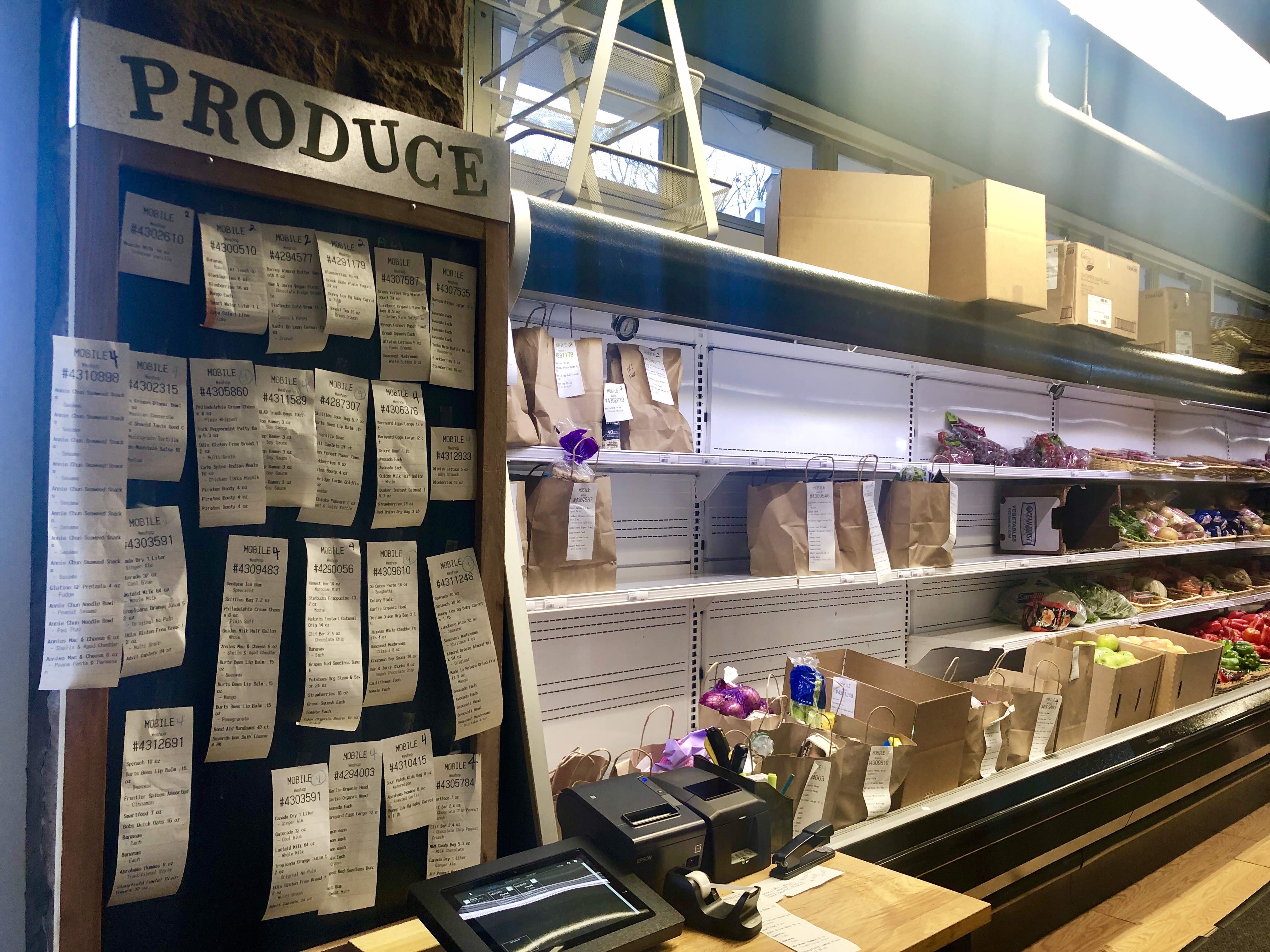
c/o Ava Nederlander, Photo Editor
With two weeks left in the semester, Weshop will reopen to students on Monday, May 3. After transitioning to a mobile ordering format in November, the University has decided to resume indoor shopping for the last two weeks of spring term. The Wes2Go app released a statement on April 21 alerting shoppers that mobile ordering will end and that all orders must be picked up the day before Weshop reopens, on Sunday, May 2.
“I think the positivity rate, or the lack of positivity rate of infections, within the state of Connecticut, within the country, and most definitely on this campus has definitely led to our decision to, for the last two weeks of the semester, open Weshop up.” Resident District Manager of Bon Appetit Michael Strumpf said.
The University is currently at risk level yellow, in contrast to Middletown, which as of April 22, 2021 is still at risk level red, the highest risk specified by the Connecticut Department of Public Health.
“I’m not worried about it opening up,” said Kara Hodge ’24, “I think the school did a good job.”
Yalissa Rodriguez ’23 expressed a similar sentiment, emphasizing the role that vaccinations have played in easing concerns.
“In respect to the pandemic, people have been open to things opening up because the vaccine [distribution] is going up,” Rodriguez said. “It’s a gradual progression [of openings], that isn’t enough to be alarmed by.”
Students also expressed frustration with mobile ordering, making them more amenable to in-person shopping.
“I totally understand why they closed this small space,” Rodriguez said. “And I understand the risks to the workers. I totally respect why they switched it online for just the betterment of campus. But it was different…stock was so small…it wasn’t accessible whenever.”
According to Strumpf, the lack of supply could be blamed on the app’s capacity, which caused Weshop’s sales to decrease during the pandemic.
“We couldn’t put as many items in inventory,” Strumpf said. “We couldn’t do the volume that we normally do if the store was wide open to shoppers, so we were limited that way and it’s really shown in the sales.”
Rodriguez had a different experience, saying that the mobile ordering feature led her to spend more money than she usually would have.
“I found myself spending more money since they went online, because you have to stay up late to order from Weshop,” said Rodriguez. “I knew I couldn’t just easily get it, so it made me want to spend more. You would put everything in the cart, and then you would press buy and it would be unavailable.”
Mobile ordering could be the cause of decreased Weshop sales the past two semesters.
“I used to go to Weshop, even as a freshman, when I had very little points, I would still go at least like twice a week,” Rodriguez said. “Now, it’s more like once every two weeks.”
For first years who have no experience with the indoor Weshop, the loss of the app may be bittersweet.
“I liked the app because it was easy to just be in bed looking through my phone to see what they had,” Hodge said. “That being said, it can be kind of a hassle. Now that it’s open I’ll definitely go more.”
With food services limited on campus, foot traffic has decreased at the University’s dining locations. Opening Weshop, Strumpf said, is the first step in getting back to normal levels of patronage.
“Overall, our customer traffic all over campus is down,” said Strumpf. “You know, we took a lot of options away. Because when we try to maximize service speed, minimize lines of people waiting for food, [we] took a lot of customization out of our food platforms. The way it’s looking, it’s going to be pretty much normal when it comes September.”
Though the app will no longer allow students to order from Weshop, it will still be utilized for Summerfields.
“We’re not gonna take it away from Summerfields. Prior to having the app at Summerfields, we had a text communication for ordering called Zingle,” Strumpf said. “It couldn’t charge a student, so students still had to come in to physically swipe their card. The app is definitely an upgrade [from] Zingle, and for the most part, it’s worked very well.”
Strumpf is grateful for student’s cooperation throughout this time and is optimistic about the future of dining services on campus.
“I think a lot of decisions that we made have kept people safer,” Strumpf said. “I thank [the students] for their patience the past two semesters. Again, we knew the app wasn’t perfect, and we knew it caused some problems for people and inconvenience for students. And hopefully we can make that up to you and get on the right track and make things right.”
Rodriguez acknowledged the efforts of the dining staff throughout this time, expressing gratitude for all of their contributions.
“Once again, I am happy with how the University took measures to protect everybody,” Rodriguez said. “I feel like we’re going in the right direction.”
Molly Meyer can be reached at mkmeyer@wesleyan.edu.
Comments are closed